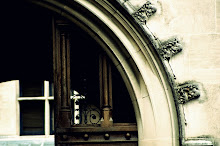This article also gives us a breakdown of the structure of animation programs. The typical animation program is made up of different components with different roles in the animation process. Different programs choose to render in different ways. Two ways in particular; some animation programs render scenes as flat frames directly onto film or a file, while others render in real time. In other words, each frame is rendered whenever it is viewed. Any interactive program generally operates through real time rendering.
When creating an animation, one must consider not just time but space as well. Objects interact with each differently depending on size and distance. Manipulating this is a technique employed in compositing. "Different compositing methods create a range of visual effects and a variety of different spatial cues about object relationships." The technique called "chromakeying" is fascinating, and is a technique used by news stations and weather stations for the weather coverage. Not only should one consider space when creating animations, but also the viewers' point of view will come into play. The movement of the viewer has a direct relation to how the objects move relative to each other. Defining the point of view is vastly easier in 3D programs than in the animation of 2D images due to the ability to manipulate a camera within a 3D program as opposed to the care that must be taken with 2D animation.
The second article, The World Wide Web endeavors to educate the readers about the innovations and abilities provided by the development of the internet. The internet is an incredible tool that gives us the ability to connect with others from all over the world. It creates an environment that enables to have discussions, share work, and collaborate on a global level. This article gives us the anatomy of the web and how it works through the explanation of XML, e-mail, multi-disciplinary platforms, and Java. It not only connects us but also acts as a storage device, and a platform for continued research and exploration. It is also a powerful marketing engine that enables the exposure of services and products that would remain undiscovered otherwise. According to this article, "Many of the limitations that define the Web today will disappear, and more and more art programs will have built-n Web features, easing the transition from desktop computer-based to Web-based art...In the not so distant future, the Web may be able to support work created with all the types of software, and may well be an integral part of the art world, essential to many types of art creation and enjoyment."
The internet has already become an integral part of today's world. Most of us would be lost without the ability to check e-mails, not to mention the fact that many companies are run solely on the web. As far as Animating through film or file, this has and always be an important part of our culture. The ability to visualize 3D spaces in movement, or to see digital creations move about in a digital world is powerful and captures the imagination of many.



No comments:
Post a Comment